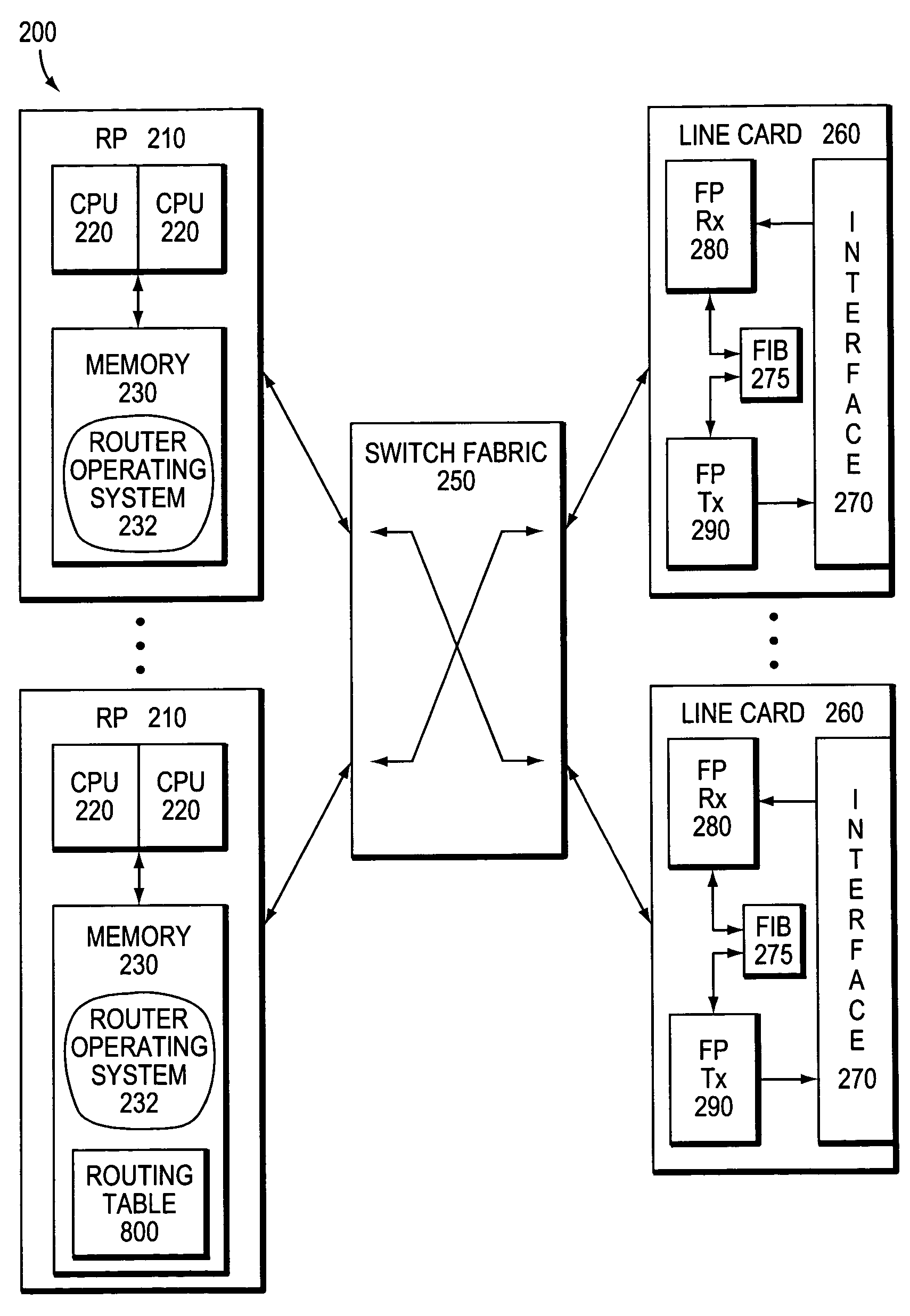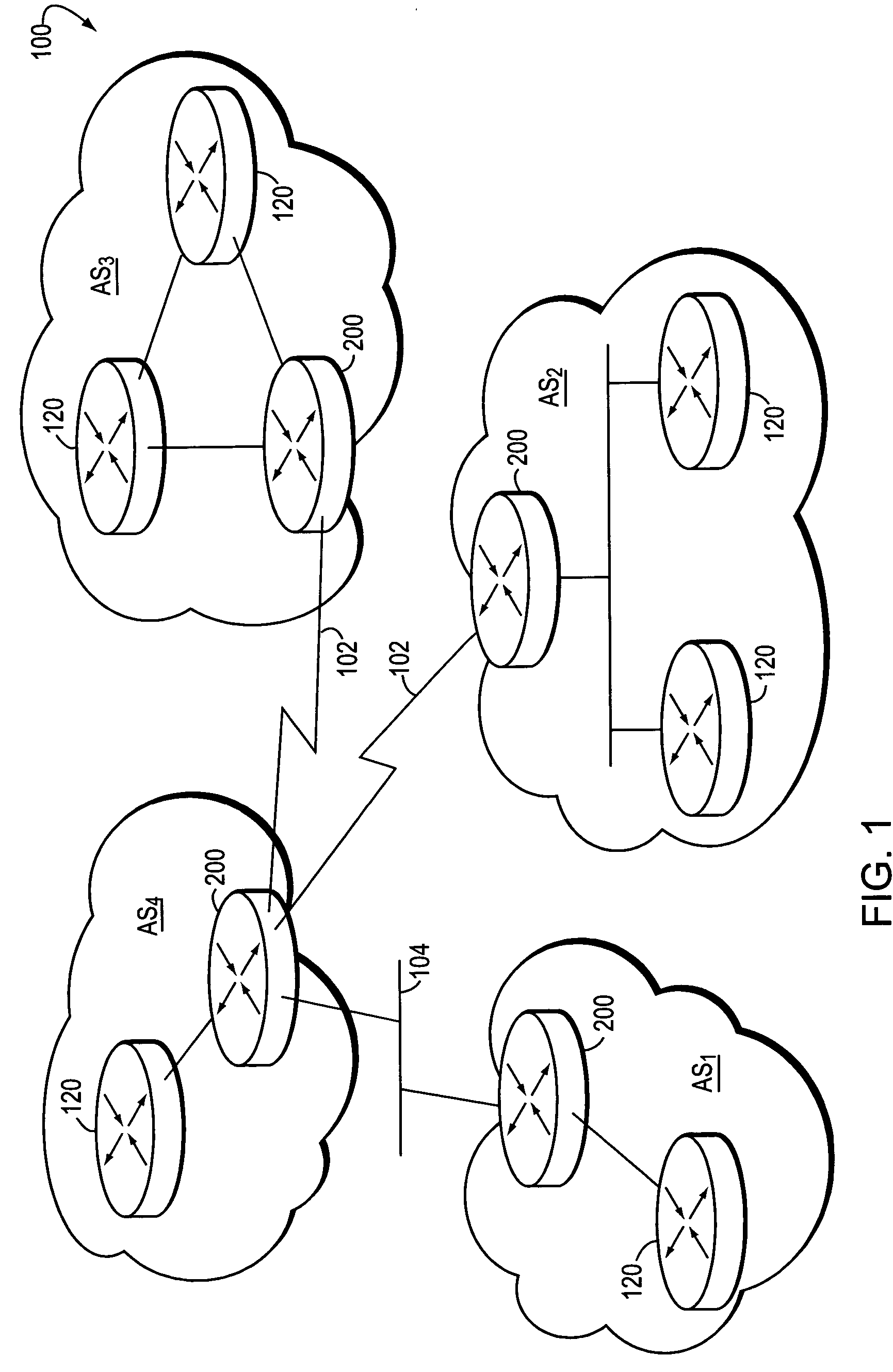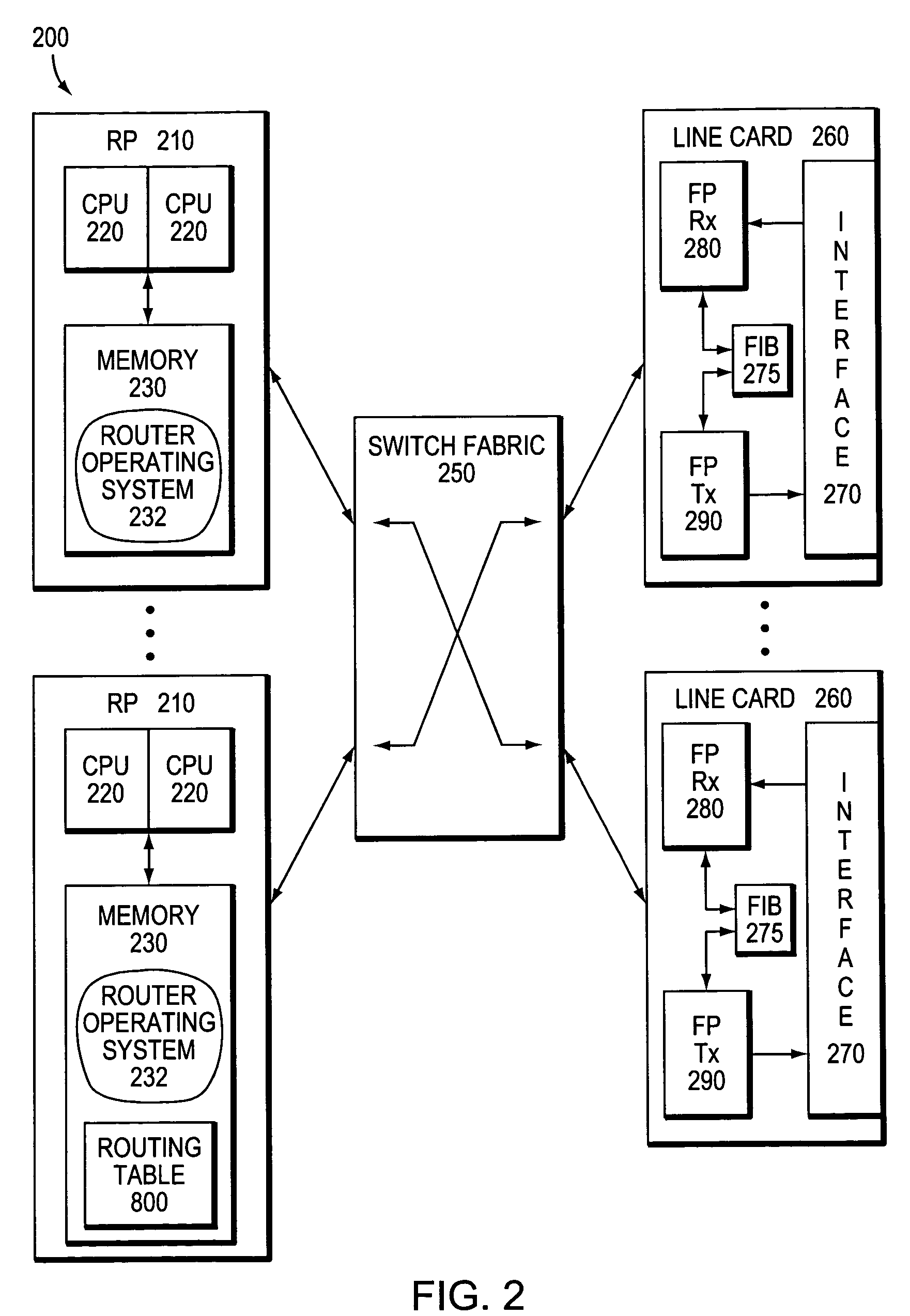Distributed software architecture for implementing BGP
- Summary
- Abstract
- Description
- Claims
- Application Information
AI Technical Summary
Benefits of technology
Problems solved by technology
Method used
Image
Examples
Embodiment Construction
[0029]FIG. 1 is a schematic block diagram of a computer network 100 comprising a plurality of routing domains or autonomous systems interconnected by intermediate nodes, such as conventional intradomain routers 120 and interdomain routers 200. The autonomous systems may include various routing domains (AS1-4) interconnected by the interdomain routers. The interdomain routers 200 are further interconnected by shared medium networks, such as local area networks (LANs) 104, and point-to-point links 102, such as frame relay links, asynchronous transfer mode links or other serial links. Communication among the routers is typically effected by exchanging discrete data packets or messages in accordance with pre-defined protocols, such as the Transmission Control Protocol / Internet Protocol (TCP / IP). It will be understood to those skilled in the art that other protocols, such as the Internet Packet Exchange (IPX) protocol, may be advantageously used with the present invention.
[0030]FIG. 2 i...
PUM
 Login to View More
Login to View More Abstract
Description
Claims
Application Information
 Login to View More
Login to View More - R&D
- Intellectual Property
- Life Sciences
- Materials
- Tech Scout
- Unparalleled Data Quality
- Higher Quality Content
- 60% Fewer Hallucinations
Browse by: Latest US Patents, China's latest patents, Technical Efficacy Thesaurus, Application Domain, Technology Topic, Popular Technical Reports.
© 2025 PatSnap. All rights reserved.Legal|Privacy policy|Modern Slavery Act Transparency Statement|Sitemap|About US| Contact US: help@patsnap.com



